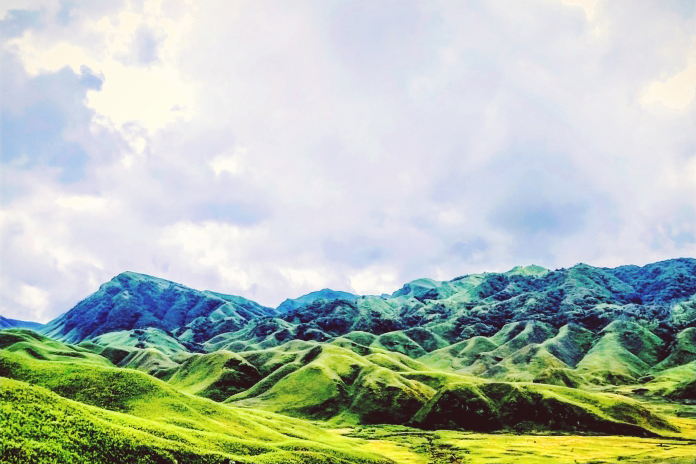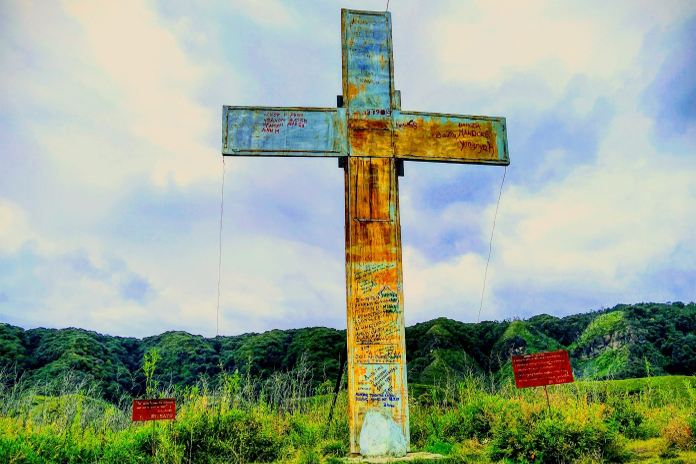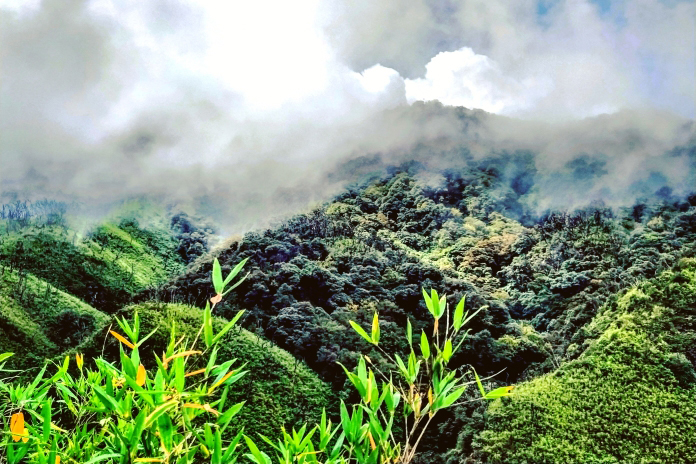Hadimba Devi Temple Manali is also known as the Dhungari Temple or Hidimba Temple, which is located in Manali, Himachal Pradesh. We all know that Manali is one of the most alluring hill stations of our Bharat.
Hadimba Temple is an ancient cave temple that is dedicated to Hidimbi Devi, who is the wife of Bhima, a character in the Indian epic Mahabharata. Hadimba temple is sited amidst a luscious cedar forest called Dhungiri Van Vihar at the foot of the Himalayas. Hadimba temple was built over a huge rock that jutted out of the ground.
The glorious Hidimba Hindu deity Temple holds a monumental significance to Hindu pilgrims because it is a part of the Hindu epic Mahabharat. But that’s not all! The Hadimba Temple is not any less of a surprise to nature lovers.
Visitors who are nature and peace lovers can enjoy the beauty of nature in the Hadimba temple. Being quite an unusual destination in itself, the Hidimba Temple is slowly attracting tourists from everywhere in the country to its doors. It is a destination where history, mythology, and heritage meet natural beauty.
Hidimba Devi Temple offers spiritual respite amidst the glory of nature.
History of Hadimba Temple:
The Hidimba Hindu deity temple was built-in 1553 AD by prince Bahadur Singh.
The temple is made around a cave where Hidimba performed meditation.
Hadimba was speculated to have lived there along with her brother Hidimb. Born into a Rakshasa family, Hidimba wanted to marry the one who would beat her brother Hidimb, who was dauntless and fearless.
During the Pandavas’ banishment, they visited Manali. Bhima, one of the five Pandavas, killed Hidimb.
After that Hidimba married Bhima and gave birth to their son named Ghatotkacha.
Architecture of Hadimba Devi Temple:
The Hadimba Devi Temple is constructed over a rock. It has doors carved out of wood. It is a 24 meters tall temple.
The tower includes three square shaped roofs which are also covered with timber tiles and a fourth brass cone-shaped roof designed at the top.
Goddess Durga is also known as the earth goddess, and her figure forms the theme of the main door carvings.
Also, there are paintings of animals, foliate designs, dancers, scenes from Lord Krishna’s life, and Navagrahas. The base of a temple is made out of whitewashed, mud-covered stonework.
There is no statute of the goddess herself, rather there is a rock with footprints. It is believed that these footprints were formed by Devi Hadimba and hence those footprints are fervently worshipped by the devotees who visit Hadimba Temple.
There is also a rope which dangles in the front side of the rock. According to legend, victims’ hands were strapped to the rope and then swung against the rock leading to bruises, bleeding, and death.
About seventy meters away from the Hadimba Devi temple, there is a temple dedicated to Goddess Hidimba’s son, Ghatotkacha, who was born after she got married to Bhima.
Things To Do:
The altitude at which Hadimba Temple is located makes it ideal for trekking. Trekking would lead you upon a journey, where you could visit the nearby scenic vistas consisting of the nearby valleys and passes.
If you have had your fill of adventure, just sit and meditate for some time. Hadimba temple is situated far away from the chaos of human activity. It is an abode to peace. Relieve your stress with the power of meditation!
Manali is famous for its mountains, hills, and valleys. Explore the areas nearby. You might stumble upon the hidden natural wonders that no one really knows about!
Camping with your family or friends in the nearby village would be highly enjoyable as it is an opportunity to learn about local cultures from the authentic and hospitable local people. As well as a great opportunity to cherish the beauty of the stars glittering in the darkness of the night sky.
Traveler Tips:
Manali is a destination where the temperatures can get as low as 1.8 degrees. Therefore carry jackets, sweaters, and clothes that can help keep you warm.
Do not carry plastic or any other dangerous objects with you.
This destination is quite delicate. Therefore we request you to refrain from polluting the environment.
Hiring a local guide would be ideal. You can cover all the scenic and important places to visit within a shorter period.
Parking issues might arise during the Dhungri Mela season so it would be wise to plan accordingly.
Dhungri Mela at Hadimba Temple:
In May, the sacred Dhungri forest is alive with festive vibes. Celebrations of the Goddess Hadimba’s birthday. This Dhungri Mela festival is more like a carnival. A fusion of tasty local cuisine and amusement rides!
It is the perfect time to learn about the local folk dances. The intricate folk dances are going to leave you in a state of wonder. With all these elements combined, Dhungri Mela offers entertainment, palatable food, spiritual symphony, scenic vistas, and a perfect getaway from the daily routine!
What to expect during the Dhungri Mela?
But what exactly happens at the Dungri Mela? What is the symbolism? Why do so many people gather at Hadimba Devi temple Manali Himachal Pradesh? The Dungri Mela is like a parade or a procession of the gods, who have paraded around on chariots.
Each village in the local area has a patron god or goddess, who they dress up and join the procession to honor that particular god. Each god is dressed up and seated in their chariots adorned in fancy silks and garlands.
Upon which the gods are celebrated as they are erotically carried from place to place. This is followed by the trumpeting of traditional music. There is a special long brass trumpet known as karnals, which are used on ceremonial occasions such as this one. They are in fact a major feature in the Hadimba temple festival.
The Dungri Mela festival goes on for days as the gods are paraded from one temple to the next. As we all know no Indian parade is complete without some folk dancing! As the musicians sit around in a circle and play a particular tune, locals perform the Kullu Natti folk dance; as they link arms and sway to the traditional rhythmic beats.
Hadimba Devi Temple Entry Timings:
This Hadimba Devi Temple is open to all the visitors from 8:00 am to 6:00 pm, all days of the week.
Ideal Visit Duration:
If you plan to visit this temple ensure that you have got 2 to 3 hours to truly enjoy the beauty and immerse in devotion. Hence plan accordingly!
Entry Fee:
This enchanting destination has no entry fee. It takes nothing from you while providing you an experience of a lifetime.
Best time to visit Hadimba Devi Temple Manali:
Hadimba temple is located amidst the snow-capped hills of Manali. Therefore the ideal visit time would be between May and October. The temperature is ideal between these months to have a fruitful journey.
If you decide to plan your trip in May, you would be in time to witness Dungri Mela. It is a three days annual festival where the locals celebrate the birthday of Goddess Hidimba. The dates are never specific because the Lunar calendar is never fixed.
How To Reach:
Hadimba Devi Temple is located in the beautiful hill station of Manali, sited in Kullu District.
By Air:
The nearest airport to Hadimba temple would be Kullu Manali airport that is 52.5 kilometers away. From the airport, you can hire a car or taxi to reach the temple which will take you about 2 to 2.5 hours.
By Train:
The Joginder Nagar Railway Station is the nearest station to Manali and the temple is only 2 kilometers away from here. You can either walk or hire a cab to the temple which is easily available.
By Bus:
Kullu ISBT is the nearest major bus station that is 41 kilometers away from the temple, with buses connected to all other major cities. You can hire a cab from Manali bus Depot to the temple. It is just a 2.2 kilometers ride!
But we would suggest that you walk to the temple instead of hiring a taxi or car because it is a prominent part of the whole experience. Take a stroll across the snowy beauty of nature. Witness the dance of the snowflakes upon the tall cedar trees as the cool breeze rustles.
Who would want to miss this serene opportunity? A respite away from the touch of human activity.
Hadimba Devi Temple in Manali is one of the astonishing wonders of India. It duly represents a strong message. The reverence you earn depends on your needs. Despite being a demon, Hidimba received the honor to be a goddess. She is worshipped because she chose to walk on the path of righteousness. Your cultural, ethnic, religious, and financial background is always shadowed by your deeds. Karma is fair and gets back to you eventually!
Credits:
We would like to thank Mr.Muneesh Panchta for the excellent Hadimba Devi Temple photo. You guys can also check out his Instagram @thedarkhorse











